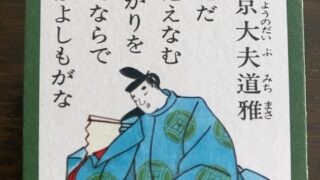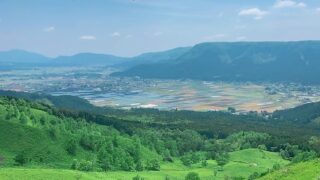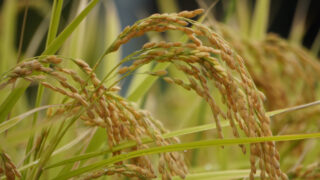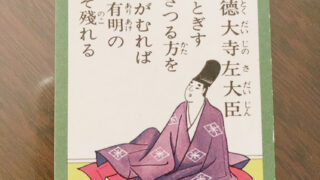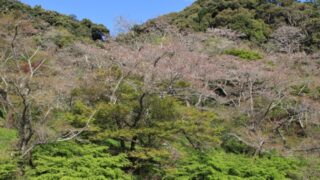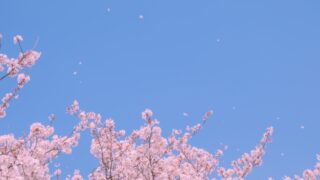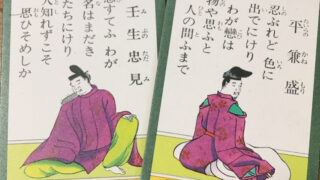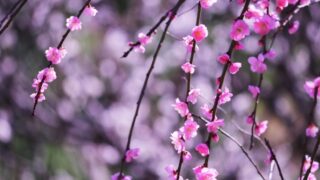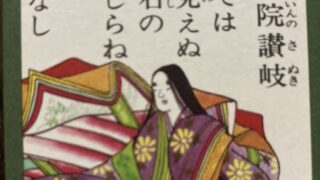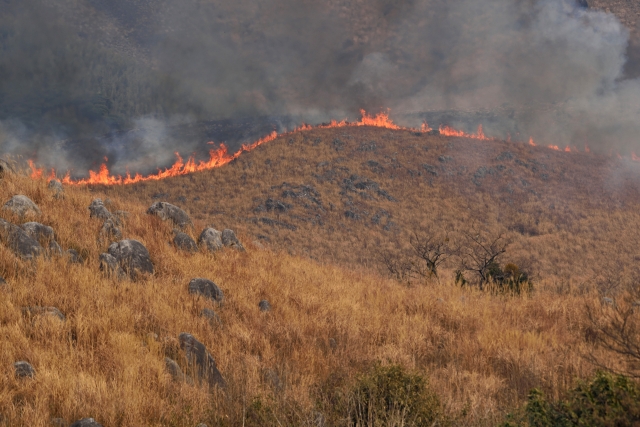かくとだに えやは伊吹の さしも草 さしも知らじな 燃ゆる思ひを
藤原実方朝臣(?年~998年)
百人一首 五十一番
「後拾遺集」 恋
かな
かくとだに えやはいぶきの さしもぐさ さしもしらじな もゆるおもひを
言葉の意味
この歌の文法は少し難しいので、今回は、意味の説明は一部だけにして、とばします。
The grammar of this poem is a bit difficult to understand, so I will skip it this time, leaving only a part of the meaning explained.
さしも草
「よもぎ」という植物のことです。すこし苦みのある緑色のもち、よもぎもちの材料として知られています。昔は、この草を乾燥させたものを、お灸という治療に使っていました。ごく少量のよもぎを体の調子が悪い所にのせて、火をつけて病気を治すという治療です。私はこの治療を経験したことはありませんが、今でも行われているところがあります。
Sashimogusa
It is a plant called “Yomogi/mugwort”. It is known as an ingredient of “Yomogi-mochi,” a slightly bitter green rice cake. In the old days, dried yomogi was used to treat moxibustion. A very small amount of mugwort was placed on the part of the body that was not feeling well and lit on fire to cure the illness. I have never experienced this treatment, but it is still practiced in some places.
「さしも草」という言葉は、このお灸の火のように私の心は熱く燃えているということを表すために使っています。
The poetry used the word “sashimogusa” to express that my heart is burning as hot as the fire of this moxibustion.
現代語訳
こんなにもあなたのことを思っているのに、言うこともできませんでした。伊吹山のさしも草のように、燃えるような気持でいるのを、あなたは知らないでしょう。
I could not even tell you how much I think about you. You have no idea how much I love you, which is as hot as the fire on Mount Ibuki’s mugwort.
言えなかった気持ちを初めて女性に伝える歌です。この歌の作者、藤原実方朝臣は多くの歌を残し、多くの女性とつきあっていました。「枕草子」で有名な清少納言とも交際があったようです。しかし、政治家としての人生は、幸せなものではありませんでした。思う人がいても、その人を幸せにすることができない。そのような気持ちが、告白をためらわせていたのかもしれません。
藤原実方朝臣は亡くなった後、幽霊になって京都に出たとか、恨みによって雀になったとかいう噂が広がりました。実方に対して、後ろめたい気持ちがある人には、そのようなものが見えたのかもしれません。
後ろめたい気持ち:自分が悪いことをしていて、すっきりしないという気持ちのことです。
This is the first poem to tell a woman how he felt that he could not say. The author of this poem, Fujiwara no Sanekata Asaon, left many poems and was in the company of many women. He also had a relationship with Sei Shonagon, famous for “The Pillow Book.” However, his life as a politician was not a happy one. Even though he had someone in mind, he could not make that person happy. Such feelings may have made him hesitant to confess.
After his death, rumors spread that he had become a ghost and appeared in Kyoto or that he had become a sparrow due to a grudge. People who felt guilty toward Sanekata may have seen such things.
Guilt: A feeling that one has done something wrong and feels uneasy.
野焼き
3月に入り、少しずつ暖かくなってきました。現在、東京では梅の花が咲いているようです。花をイメージする季節ですが、この時期、日本各地で野焼きという行事が行われる季節でもあります。野焼きとは、山の草地に火をつけて枯草を燃やす風習です。野焼きをすることで、春に新しい芽が出、美しい緑で山が覆われます。山の環境を守るための大事な行事ですが、危険を伴うため、細心の注意をもって行われます。
March has arrived, and the weather is gradually getting warmer. Currently, ume (plum) blossoms are in bloom in Tokyo. Although this season is associated with flowers, it is also the time of year when an event called Noyaki (burning in the field) is held in many parts of Japan. Noyaki is the custom of setting fires in mountain meadows to burn dead grass. Noyaki allows new shoots to sprout in the spring, covering the mountains with beautiful greenery. It is an important event for protecting the mountain environment, but it is carried out with great care because of the danger involved.
阿蘇山の野焼きです。2月下旬から3月中旬にかけて行われます。
This is the burning of Mt. Aso, which takes place from late February to mid-March.
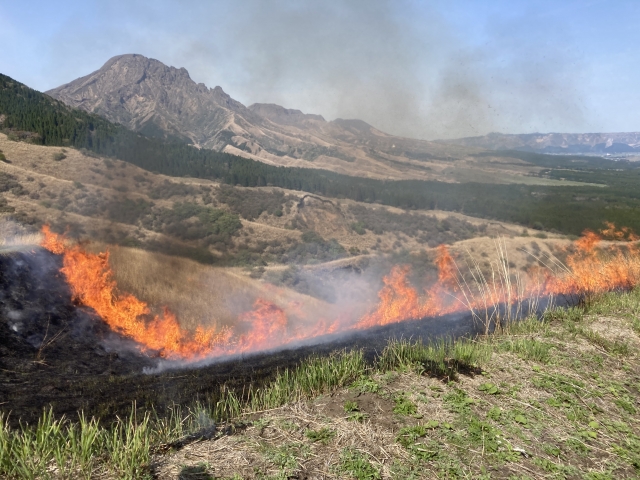
野焼きが終わった後の阿蘇山です。
This is Mt. Aso after the burning of the fields.
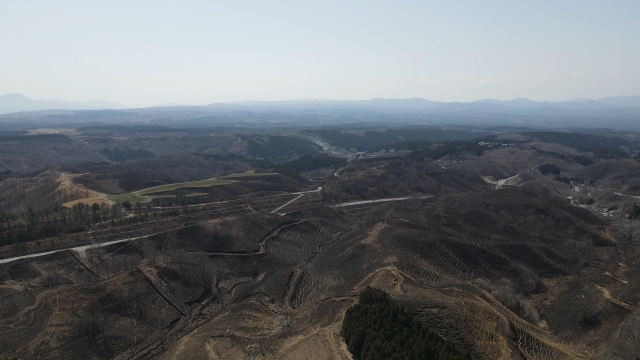
5月の阿蘇山です。新芽の緑が目に鮮やかで、とても気持ちのいい景色が広がります。
This is Mt. Aso in May. The green of the new sprouts is bright to the eye, and the scenery is very pleasant.


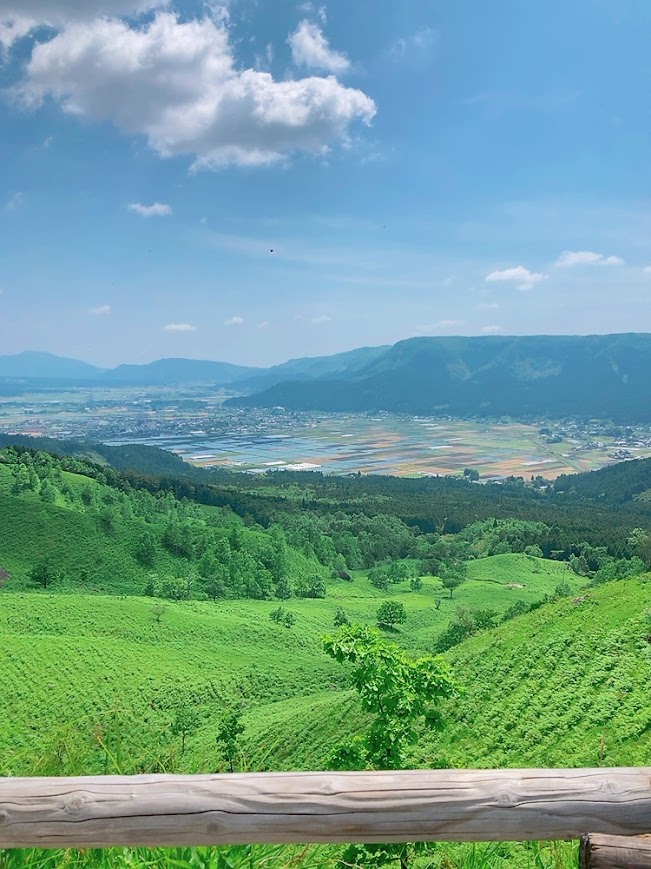
令和七年三月十七日
/
